The fires of 1879 and 1890, along with the ravages of World War II, left prewar Utena in ruins. However, the spirit of Utenis Square still echoes with memories of the bustling Thursday markets and the vibrant community of Jewish residents. In the interwar period, the square was dominated by imposing brick structures owned by R. Kabas. These buildings housed the county police station, a branch of the bank, various shops, and a bustling canteen. Sadly, they were all destroyed during the chaos of the World War II. Establishments belonging to Levijoras and L. Simanavičius were vibrant hubs of activity, hosting the “Žibintas” bookstore, music, jewellery, grocery stores, and the “Pažanga” company. Regrettably, these buildings suffered the same unfortunate fate during the war. Today, in place of these historical landmarks, stands the Faculty of Medicine of Utena College, symbolizing resilience amidst adversity. The home belonging to E. Goldfainas once housed an electrical and mechanical office alongside the “Progresas” warehouse that was used for bulk goods, with the adjacent building serving as the Ashkenazi pharmacy. These sites now house the Utena Local Lore Museum, preserving the city's rich heritage. The premises belonging to D. Libermanas were a hub for building material trade. S. Vainas and L. Lipšicas owned shops that operated within the same building. The adjacent, two-story brick house belonging to S. Šternas, accommodated the district’s pharmacy and “Ūkio” bank, and has given way to the Utena District Municipality Administration Building. The legacy of the Žingelaičiai sisters' yarn and knitwear shop lives on in the converted design company building. Today, Utenio Square marks the territory of the old town and greets visitors with significant changes. Once bustling markets now resonate in other areas of the city. However, residents of Utena and guests of the city are beckoned to the square for its ongoing events. Within the vast space of the square, a dancing, illuminated fountain, glass gallery, benches, and flowerbeds adorn the surroundings. Monuments commemorate significant historical dates such as March 11, 1990, and pay tribute to the partisans of the Vytautas military district “Aukuras”. The square hosts institutions vital to the town and district. Commemorative plaques on the facade of the Utena Local Lore Museum, which housed the first municipality of Utena in 1918, honor the signatory of the Act of Independence and the founder of the municipality, Steponas Kairys (1879–1964), as well as the restoration of the municipality in Utena in 1919. Small architectural elements within the square signify the international cooperation between the current Utena District Municipality and cities abroad.

+5


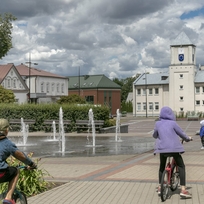
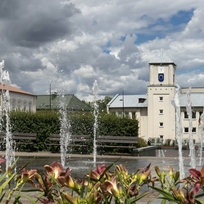
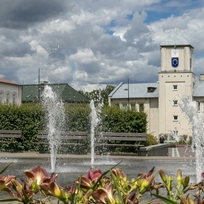
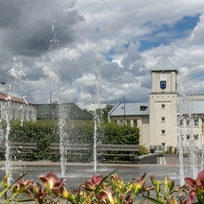
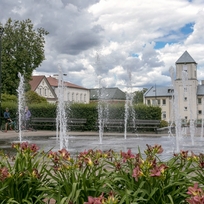
Super darbai labai spalvingi, originalūs, spalvoti